ClassOne ICAS Solution THE SERVER CAPABLE OF RUNNING YOUR ENTIRE COMMUNICATION PLATFORM
Ideal for public safety, emergency dispatch, and railway, seaport and airport security organizations, critical public infrastructure, the ClassOne iCAS Server transparently integrates all land-based radio channels with business communications on a high-availability SIP/UCaaS platform.
The ClassOne® Interoperability and Collaboration Applications Server (iCAS) links two-way land mobile radios with telephones, cellular and mobile devices. Seamlessly connect and collaborate to improve efficiency. Eliminate interoperability conflicts, speed decision-making, shorten response times, and link vital people, organizations and processes.
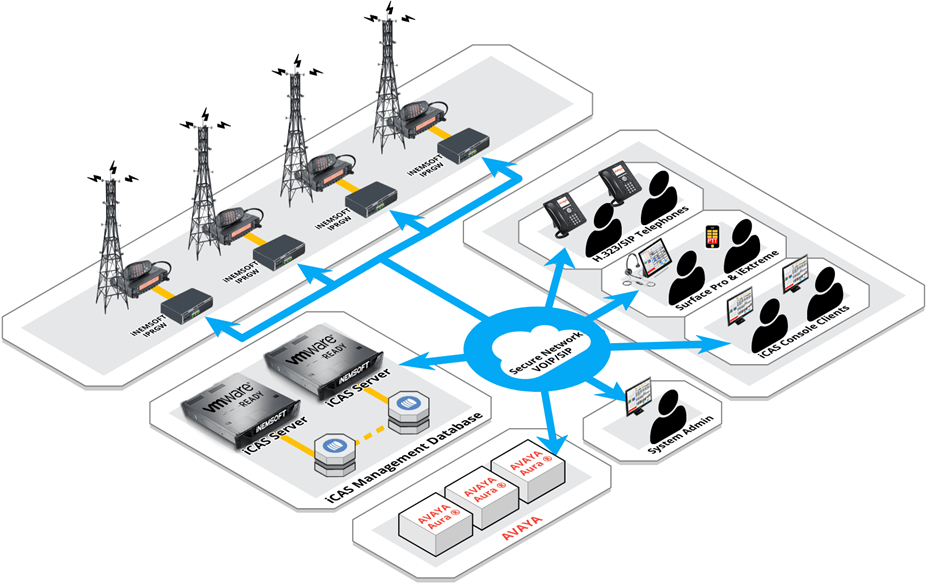
With INEMSOFT’s transformative iCAS, organizations can integrate radio communications directly into their overall core communications infrastructure. All parties can communicate seamlessly on a single IP-enabled radio-telephony platform – boosting collaboration, speeding decision making, and shortening response times. Radio operations can be fully integrated with corporate back-office systems, voice networks, self-service applications, customer service systems, and more.
The CLASSONE® iCAS is appropriate for virtually any organization that needs to connect people and technology to perform mission-critical tasks, such as:
- Dispatch emergency vehicles, first responders, marine traffic, automobiles, trucks, trains or airplanes.
- Portable to mobile command vehicles for responding to public emergencies and natural disasters.
- Link primary dispatch organizations and regional emergency operations.
- Communicate with maintenance, customer support, crew management or police.
- Secure railways, seaports and airports or other highly critical infrastructure by providing seamless interoperability with public safety teams and emergency responders.
A key differentiator for the ClassOne® iCAS is its ability to adapt to various operating environments and simplify the way people and technology can connect. It orchestrates access to telephones, overhead paging, two-way radios (LMR), digital signage, wireless and mobile phones, hotlines, hoot-n-holler units and other networked devices.
Multiparty collaboration and radio-to-radio, software-based bridging enable all users to share radio and emergency channels, incident data and field endpoint resources efficiently and reliably. The iCAS with its SIP-Based foundation scales far beyond traditional and legacy-based dispatch radio communications systems
Enterprise Radio and Unified Communications
The ClassOne iCAS enterprise deployment makes use of the on-premise Avaya Aura UCaaS telephony infrastructure, session management, advanced call routing, conferencing and contact center. The CLASSONE® iCAS and Avaya Aura® unify the customer land-based mobile radio channels (LMR) into the overall enterprise voice communications fabric – enabling mission-critical interoperability, unified communications and collaboration.
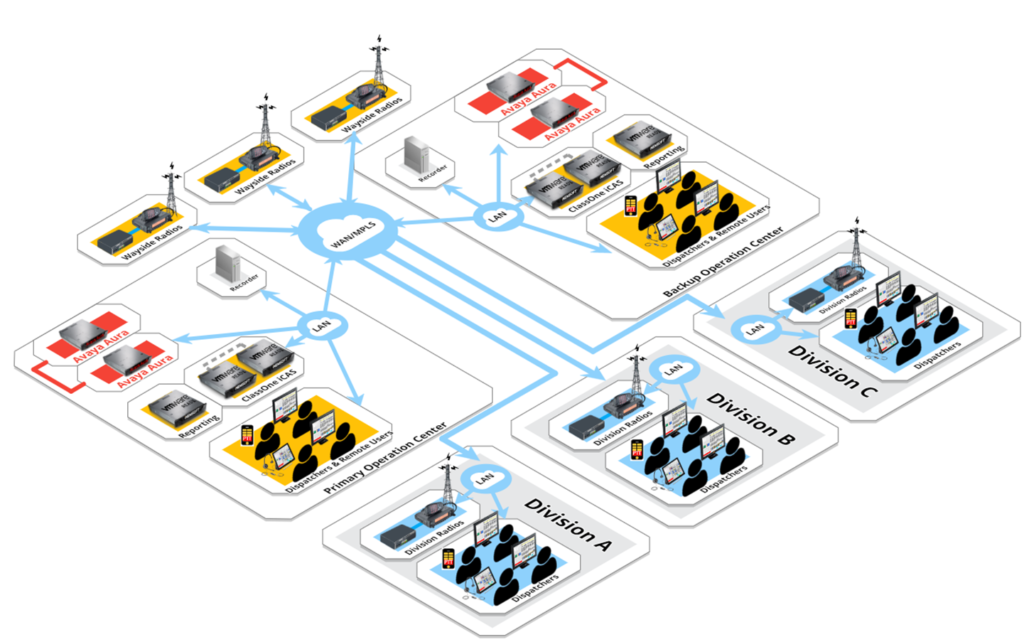
Standard Radio and Telephone Communications
The ClassOne iCAS Radio-Telephone deployment model makes use of the on-premise SIP telephony infrastructure linking Land Mobile Radios to the voice network. This deployment model offers the most affordable method for building command and dispatch centers for organizations that need to extend its radio communications to its telephony and voice network.
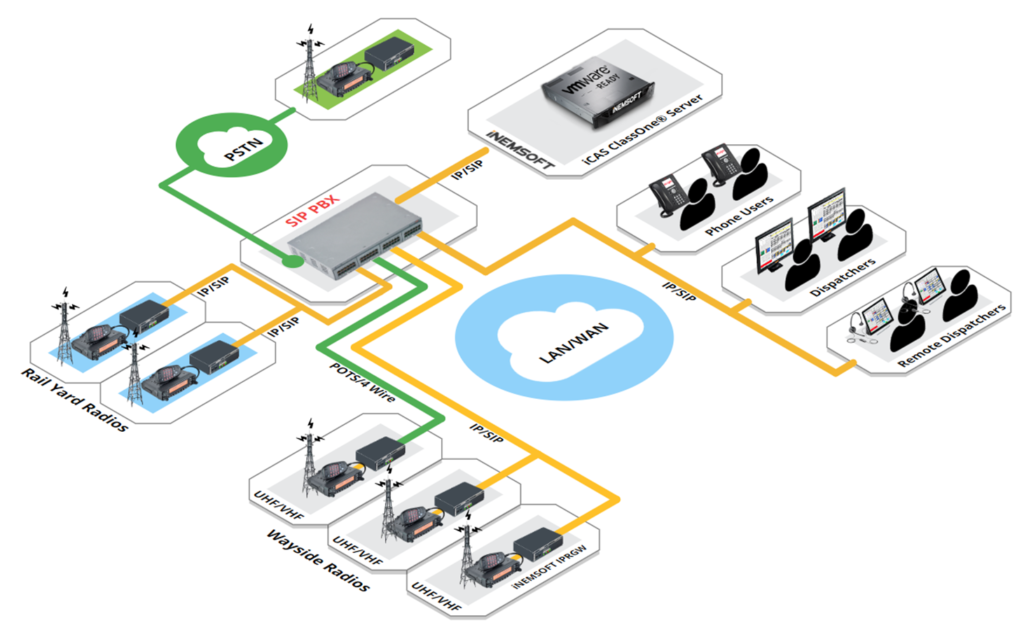
Web-Based Control Center
- Multi-level User Authentication and Access Rights
- Local and Remote Network Access
- Central Location to Configure and Maintain the Entire Dispatch System
- SNMP Alarms with Advanced Filters
- HADR Database Configuration and Takeover
- Switchover ClassOne® Services to Multiple Sites
- Switchover Consoles to Multiple Sites
- Apply Configurations on Single, Group or All Consoles
- Voting Steering Group (VSG) Management
- Access, Configure and Upgrade any IPRGW from a Central Location

- Browse, Control, Configure iCAS Server Processes
- Centralized Remote Access to All Systems
- Detailed Health Status of All System Processes
- Advanced Administration Tools

- Browse, Control, Configure iCAS Consoles
- View Console Health Status and Audit Records
- Configure Console Settings Globally and Individually
- Switchover Consoles to Secondary Sites During Scheduled Maintenance and Emergency Situations
- Console Switchover Group Management

- Browse, Control, Configure IP Radio Gateways
- Centralized View of Registered IP Radio Gateways Status
- Centralized Remote Access to All IP Radio Gateways
- Web-based Firmware and Configuration Management
- Web-based Firmware Bulk Upload
- SNMP Alarms and reporting
Voting and Steering Group (VSG) Management
The INEMSOFT ClassOne® iCAS system supports software-based radio voting based on received DTMF tones triggered with RSSI measurements. When a radio call-in is received in the field, in many instances it will be received by multiple base radio stations that share a frequency. All call-ins (DTMF) are received at the server at approximately the same time window. The system would receive the calls, and vote the system based upon the highest received signal strength value. The ClassOne® iCAS Voting uses the Radio Gateways for the measurement or transmission of the RSSI, a ClassOne Software Voter Server database and the SIP Console.
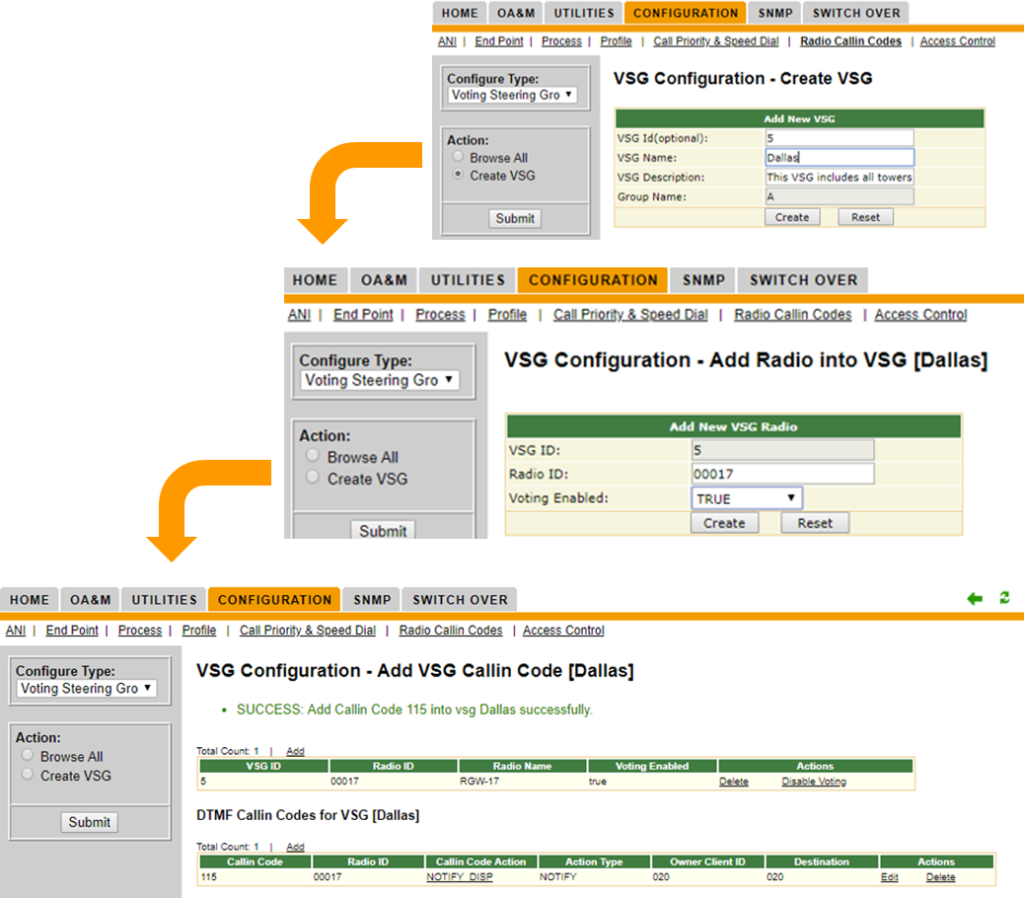
- Software-base Radio Voting
- Eliminates Communication Disruptions
- Three Step User-friendly VSG Setup Process (Create VSG, Add Radios, Add VSG Calling Codes)
- Centralized Location to View, Edit or Delete VSGs and Callin Codes
- Centralized Location to Configure Calling Code Actions and Notifications
Radio and Telephone ACD Call Routing (PTC)
The CLASSONE® iCAS integrates with Avaya Contact Center applications, enabling authorized customer service support, crew callers and contact center agents to communicate with airplanes, trucks, ships, trains, vehicles, public safety contacts, emergency responders and field personnel.
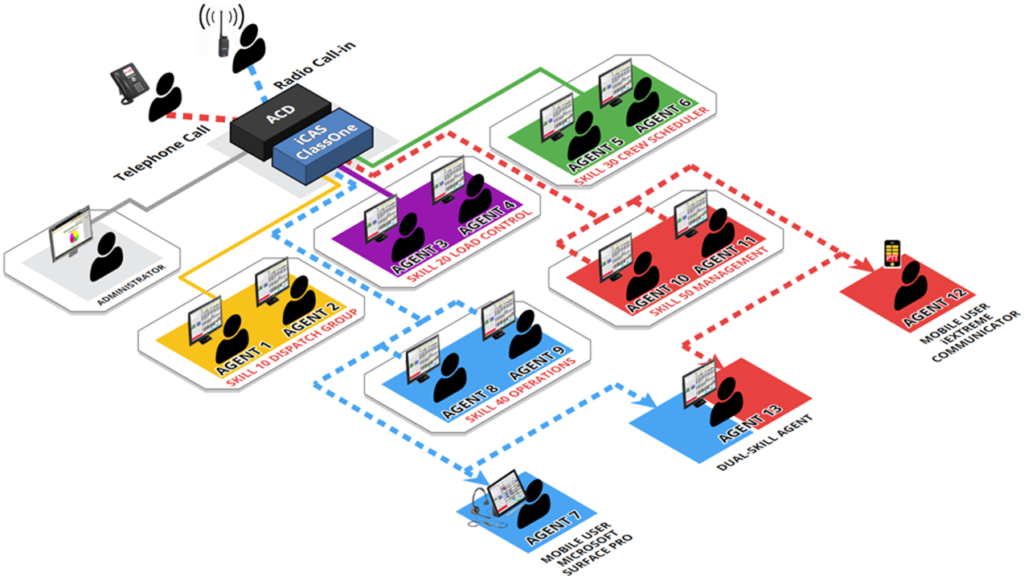
- ACD agent with automatic call distribution
- Avaya call center elite
- ACD agent states captured to reporting server
- ACD routes incoming calls to specifically assigned skills and agents.
- Agents assigned login IDs automatically enter the work mode for all the skills assigned to their IDs.
- Avaya Aura System Administrator assigns skills for agents.
- ClassOne System Administrator adds the skills to dispatcher profiles.
- ClassOne System Administrator creates the proper call flows when a dispatcher login to a console.
- Agents can control their work mode and availability to answer calls using console ACD control tool
Operator Console ACD Agent Functions

- User Login/Logout. Shows each agent’s login and logout date and time for each login session.
- Auxiliary (AUX) Time with Reason Code. Is an agent state that is used to make an agent unavailable for incoming distributed calls. Its basic purpose is to manage the workload of non-call activities, managing service levels and optimize staffing.
- ACW (After Call Work). Refers to the various tasks an agent might need to perform once they have concluded a call. ACW is a part of the interaction and is therefore included in the total handling time for the call.
- Ready. Agent is ready to accept ACD calls.
Radio-Telephone Call Reporting Center
The iCAS solution includes a reporting server designed to measure performance of system users and to optimize the customer contact center and radio dispatch operations. The thorough and detailed reports help the contact and dispatch center managers identify operational problems, balancing workload and forecast business demands during seasonal changes in business. The reporting server provides detailed reports covering the following call traffic:
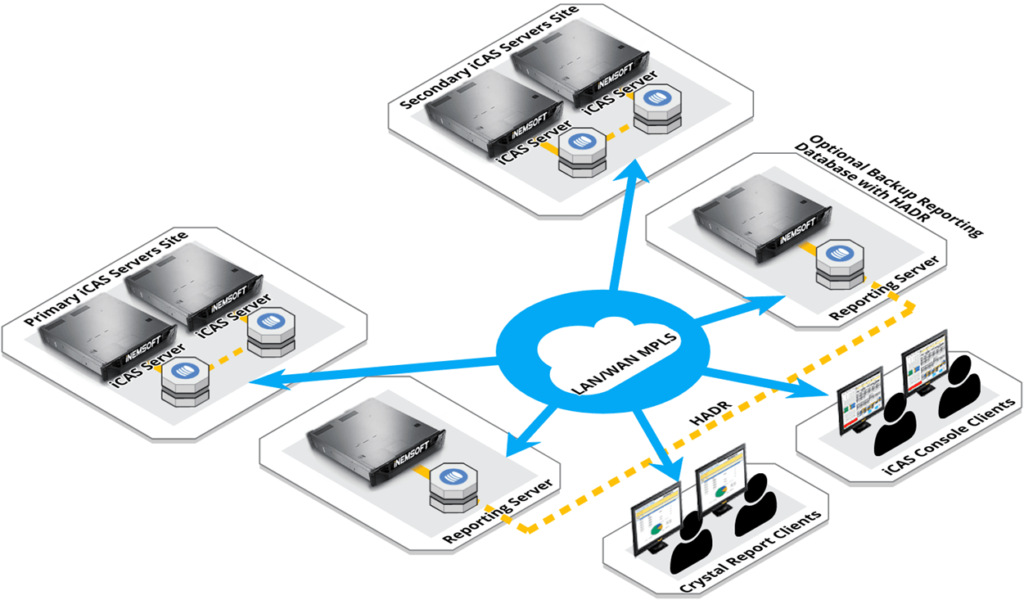
- Measuring performance for people, assets and operations
- Optimize business operations
- Identifying operational problems
- Balancing workload
- Forecast business growth
- Report Integration Into Business Processes with XML Exporting Tools
Reporting Data Designed to Optimize Business Performance
- Inbound and outbound phone call statistics, such as durations, types, answered, abandoned, cleared, emergency calls, call wait times, etc.
- Inbound and outbound radio call statistics, such as durations, answered, cleared, voted vs. non-voted, conference participants, frequency changes, wait times, etc.
- Console login/site statistics, such as console site switchovers, login and logout details, TMDS shift change, etc.
- MX Traffic including traffic loads, dialing durations, open conferences, participants, etc.
- ACD reporting such as agent’s login stats, ready, ACW and AUX durations for each user.